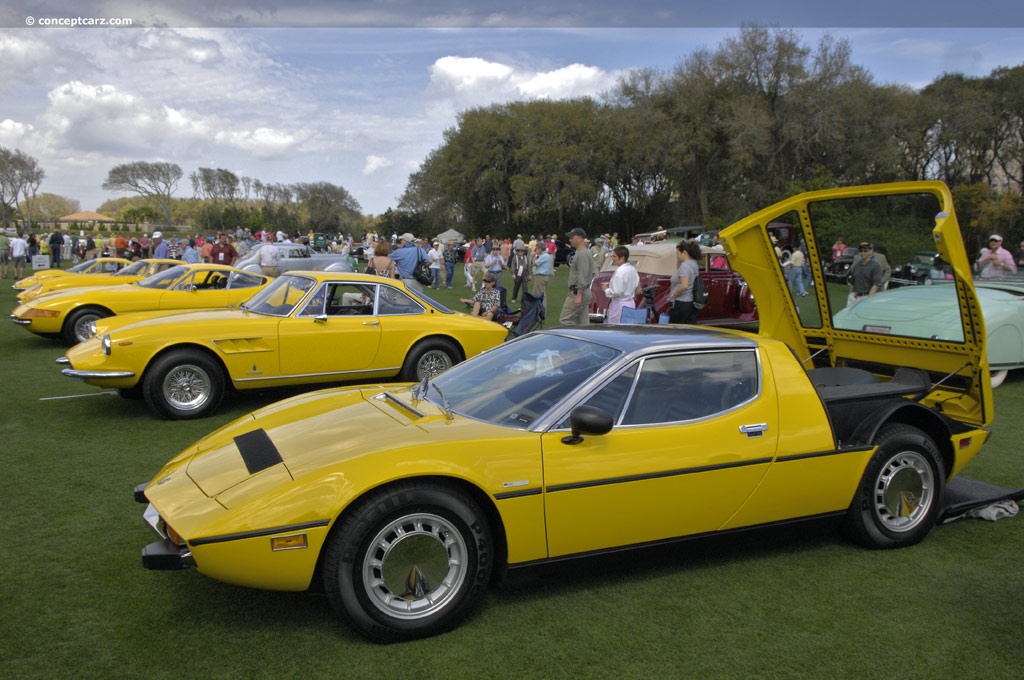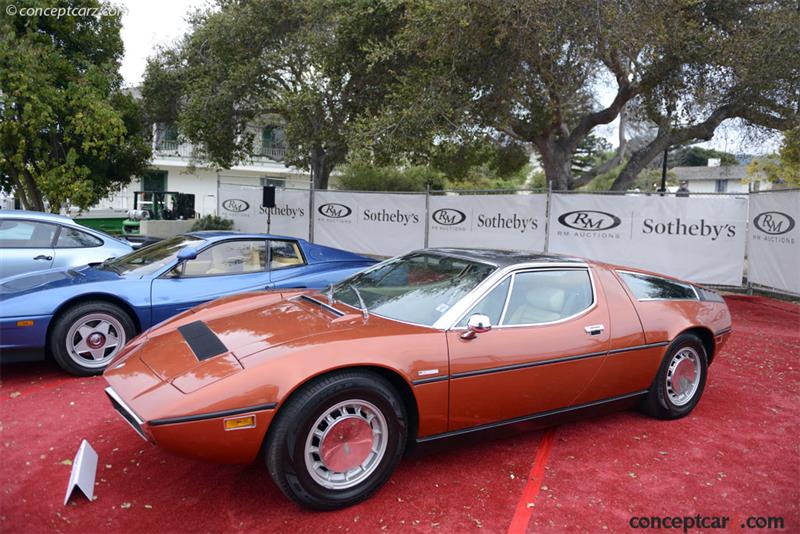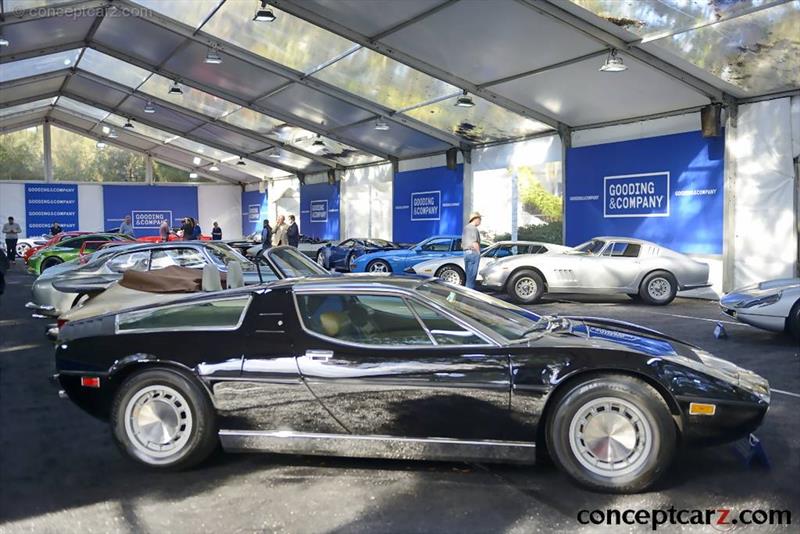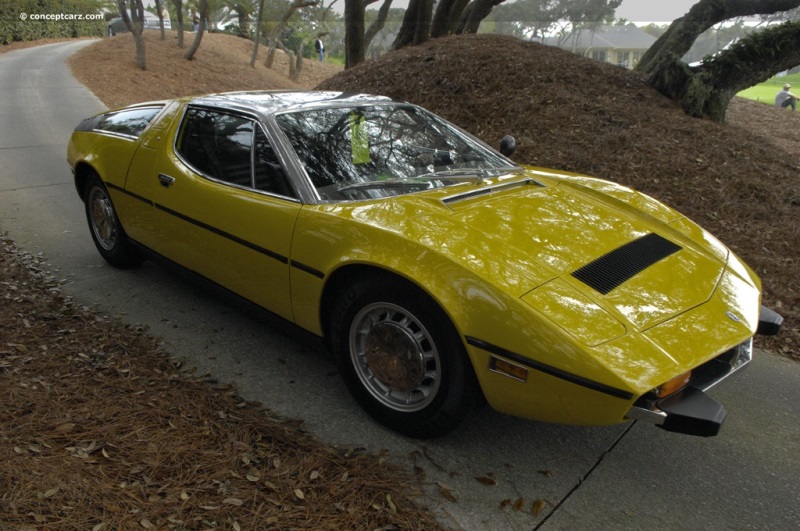Maserati's devotion to motorsports during the 1950s was refocused on more profitable endeavors during the 1960s, resulting in the birth of the 3500 GT and 5000 GT. The 3500GT was replaced by the Sebring in 1962 and the 5000GT by the Ghibli in 1967. Joining the lineup during the mid-1950s was the Mistral coupe and Spyder and later a Spyder version of the Ghibli. The Maserati Indy was a four-seater fastback grand tourer introduced in 1969. Clearly, Maserati was aggressively fielding worthy products to contest the GT market. 
CoupeIn 1966, Lamborghini introduced a mid-engined sports car called the Miura which arguably birthed the supercar market in Europe. Several companies fielded competitors of their own, including Maserati, with their mid-engine, V8-powered Bora in 1971. Unlike the formula applied by most automakers, its styling was restrained and practical, devoid of the exotic appearance and decorations adorning most other mid-engine sports cars of the era. Giorgetto Giugiaro's nascent design firm, Italdesign, had been commissioned with the design, bestowing it with striking similarities to the BMW M1, the Delorean DMC 12, and the DeTomaso Mangusta. Its wind-cheating design had a low drag coefficient of 0.30. Among the most distinctive features of the Bora were the brushed stainless steel windscreen pillars and roof, dual pane glass, and concealed headlights in the front fenders. The fabrication of the all-steel body panels was produced by Officine Padane of Modena.The wheelbase measured 102.4 inches, a height of 44.6 inches, a width of 69.6 inches, and a length of 170.7 inches. It used a steel monocoque chassis and body with a tubular steel subframe at the rear for the transmission and engine. The fully-independent double-wishbone suspension system designed by Giulio Alfieri was a first for a Maserati road car and used coil springs, anti-roll bars, and telescopic suspension dampers. The show car and development prototype used a MacPherson strut-based front suspension, while the production versions used a more conservative wishbone arrangement at the front. 
CoupeMounted mid-ship was a 4.7-liter alloy V8 paired with a ZF five-speed transaxle. Starting in 1973, a larger 4.9-liter engine was available as well, gaining 10 horsepower over the 4.7-liter version. Both engines were mounted longitudinally in the middle of the car. They had 16 valves driven by four cams, hemispherical combustion chambers, an 8.5:1 compression ratio, and four 42 DCNF/14 downdraught Weber carburetors with Bosch electronic ignition.Citroen had gained a controlling interest in Maserati in 1968, which meant the Bora benefitted from their technology. Citroen's high-pressure LHM hydraulics were used to operate the retractable headlights, the driver's seat, and the ventilated disc brakes on the main circuit. The Bora had a hydraulically powered pedal cluster that could be moved backward and forward at the touch of a button. Additionally, the steering wheel could be tilted and telescoped.The Campagnolo light-alloy wheels measured 7.5 x 15 and initially had distinctive removable polished stainless steel hubcaps. They were wrapped with Michelin XWX 205x70 which were later replaced by 215/70VR15 tires on the rear, with either Michelin XWX or Pirelli Cinturato CN12 tires. The interior was accommodating and luxurious, with bucket seats, a center console, rear bulkhead, dash, and door trim trimmed in leather. The engine bay was carpeted, which helped reduce engine noise. Among the list of standard equipment included an air conditioning system and electric windows. Initially known as Tipo 117 and later the Bora, Maserati introduced its mid-engine supercar in March of 1971 at the Geneva Salon with deliveries commencing before the end of the year. By January 1976, Maserati's management apparently had discussed shelving the Bora but later that year decided to continue, though with an enlarged 4.9-liter V8 engine. By the time production ceased in 1978, a total of 564 examples of the Bora had been built, 275 with the 4.9-liter engine and 289 with the 4.8-liter V8. The enlarged engine was one of the few changes made to the Bora during its production lifespan. Additional changes included front (rather than rear) hinged front lids, a rectangular black air-exit grille was added across the hood, and the pop-up headlights gained rounded inside corners. To comply with U.S. DOT safety legislation, US-destined cars received safety-compliant front bumpers. From 1973 forward, the U.S. Bora models had air-pump emissions-equipped 4.9-liter engines similar to the ones powering the U.S.-bound Ghiblis. The 4.9-liter later became standard on all Boras.
by Daniel Vaughan | May 2022
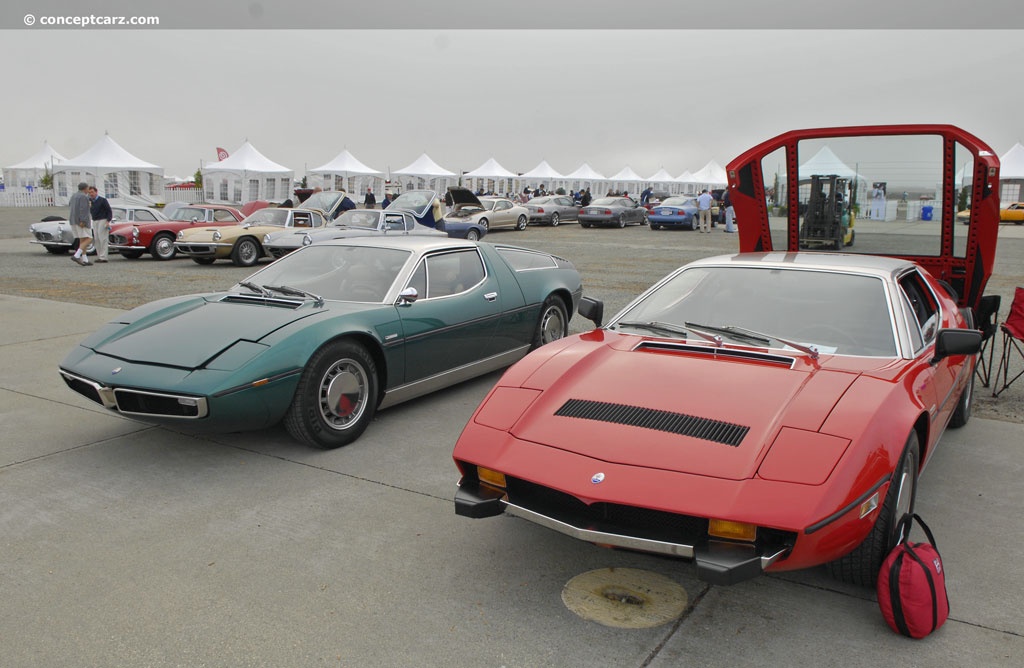
Coupe

Coupe
by Daniel Vaughan | May 2022
Related Reading : Maserati Bora History
The Bora was introduced in 1971 and produced until 1978 with over 570 examples produced. It was a 2-door coupe with the engine placed in the middle, powering the rear wheels. Ferrari had been in the process of creating a mid-engined sports car while Lamborghini and DeTomaso had their Countach, Miura, and Mangusta, and the mid-engined Ford GT40 had even made a few appearances at LeMans. After seeing....
Continue Reading >>
Continue Reading >>
Similar Automakers
1974 Maserati Bora Vehicle Profiles
Recent Vehicle Additions
Performance and Specification Comparison
Price Comparison
$21,705
$33,000
Bora Specification Comparison by Year
Year
Production
Wheelbase
Engine
Prices
Related Automotive News

Stunning 718 RSK and Selection of Significant Porsches Set to Headline Gooding & Company's Return to Amelia Island
The auction house returns to Amelia Island with an outstanding 1959 Porsche 718 RSK alongside an ultra-rare 1993 Porsche 964 Carrera RS 3.8 and a pristine 2005 Porsche Carrera GT.
Gooding %26 Company is proud to return to Florida for its 12th annual...

Lamborghini Celebrates The 50Th Anniversary Of The Jarama GT
This year marks the 50th Anniversary of the Lamborghini Jarama GT, presented for the first time at the Geneva Motor Show in March 1970.
The Jarama, whose name derives from an area north of Madrid famous for breeding fighting bulls, was the latest evolution...

THE McLAREN F1
FOR THE DRIVER VITALLY – AS IN ONE OF McLARENS WORLD CHAMPION RACING CARS – DRIVER AND VEHICLE BECOME ENTIRELY AS ONE
The primary design consideration for the McLaren F1 has been to make it without reserve a drivers car, an extremely high-performance...

The Trident is Raised
One of Italys most famous marks, and perhaps most troubled, the trident-bearing automaker continues to provoke passion through its search of excellence.
Five brothers would come together in December of 1914 to found a motor company bearing their name—Maserati....

12C SPIDER TO MAKE ITALIAN PREMIERE AT THE 37TH BOLOGNA MOTOR SHOW
Italian debut of the 12C Spider – new Spider version of highly acclaimed 12C
Developed alongside 12C as a pure McLaren – including revised 625PS 3.8-litre V8 twin-turbo engine
Carbon fibre MonoCell ensures class-leading rigidity, handling and...
